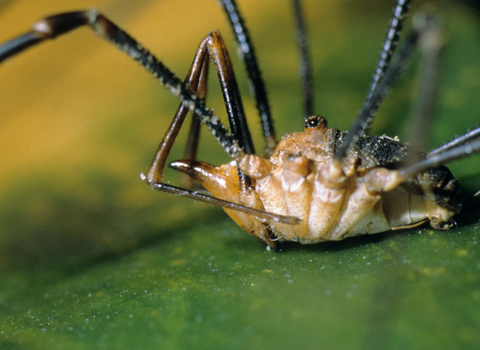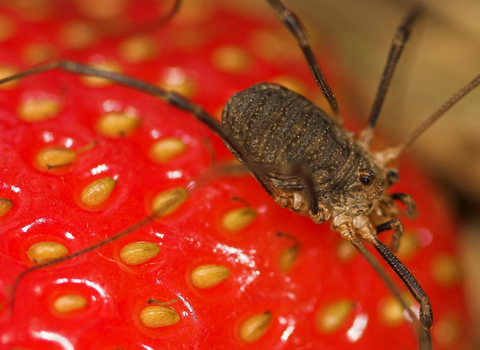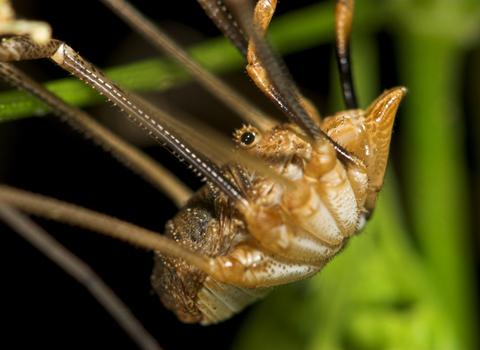
Harvestman (Phalangium opilio) ©Paul Richards

Harvestman (Phalangium opilio) ©Paul Richards

Harvestman (Phalangium opilio) ©Paul Richards
Common harvestman
The common harvestman is familiar to us as the large, spindly spider-like creature that frequents gardens and houses. It predates on smaller invertebrates which it catches using hooks on the ends of its legs.
Scientific name
Phalangium opilioWhen to see
January to DecemberSpecies information
Category
Statistics
Body length: up to 8mmLeg span: up to 5cm
Common.
